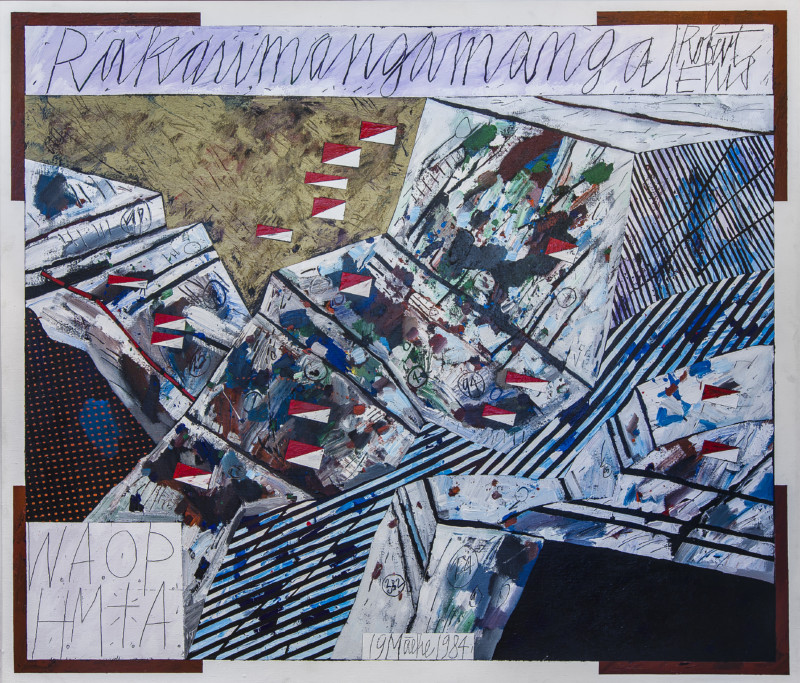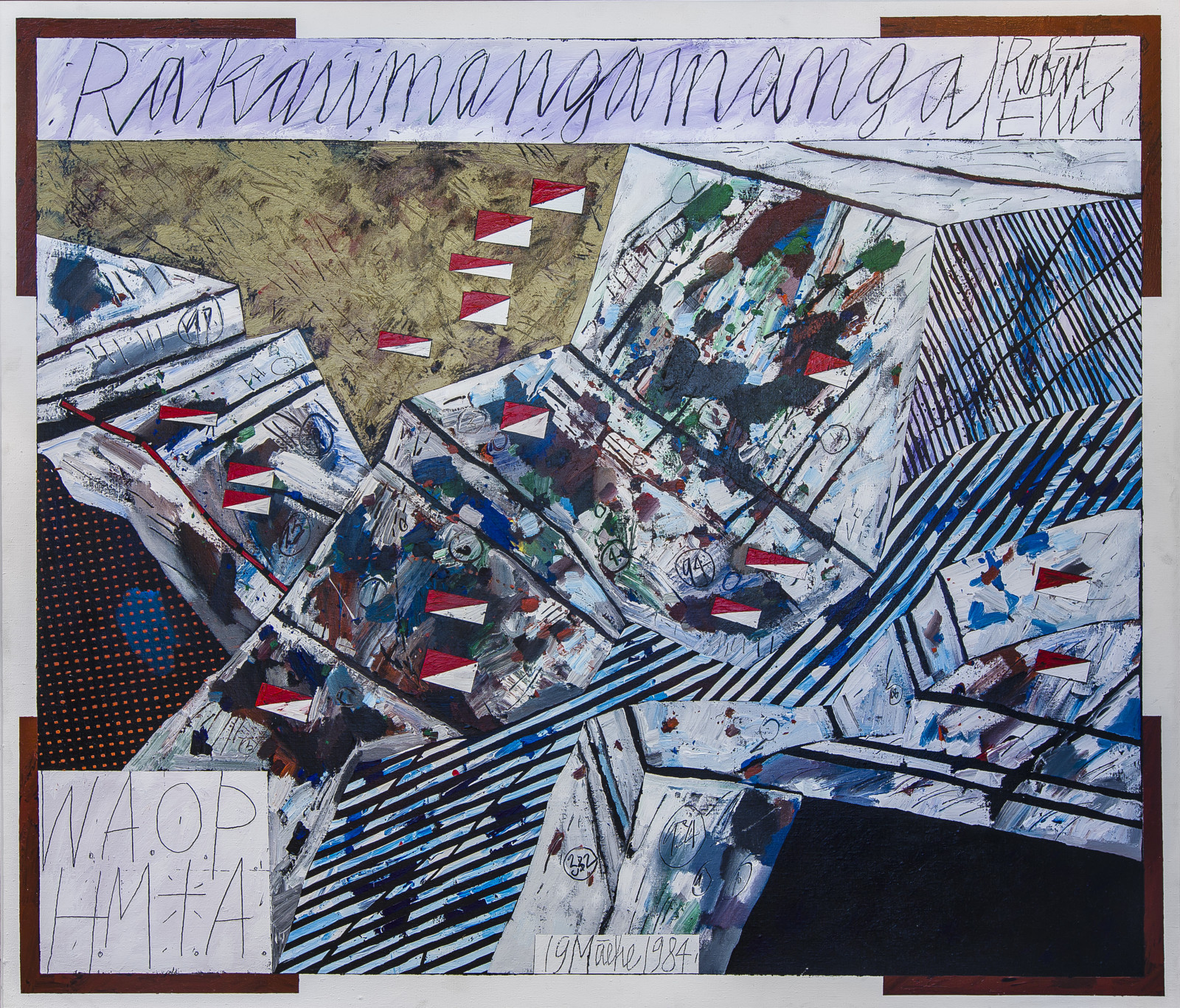ELLIS, Robert;
Rakaumangamanga 19 Māehe 1984
1984
Oil on canvas
1600 x 1850mm

This work has also been called Return to Rakaumangamanga, 19/3/1984 (or similar).
The following text comes from the catalogue for the exhibition Tirohanga Whānui.
The English-born painter Robert Ellis, who came to New Zealand in 1957 as a lecturer at Auckland University’s Elam School of Art, married into a Māori family from Te Rāwhiti. This painting is one of his many painted expressions of indignation at the treatment of Māori land as an economic unit, parcelled up, made subject to rates so that local councils could gather revenue. In some cases if rates were not paid then councils could seize portions of the land in lieu. Surveyors’ flags dotted about the surface of the land (and the painting) were actually first observed by the artist in an arid part of southern Spain; as a painter they seemed to him applicable to what had happened to his Māori family’s ancestral lands.
Here is Rākaumangamanga, sliced up into collapsing blocks, numbered, scratched over by bureaucratic pens, floating in space.
In 1927, the area was visited by the Māori spiritual leader Tahupotiki Wiremu Ratana, another opponent of land alienation. The letters in the lower left corner are an anagram for the familiar Ratana chant that includes the words ‘Glory Be to God’.
The title of this painting, Rakaumangamanga, refers to the sacred mountain that dominates the peninsula at the eastern entrance to the Bay of Islands. It is also known as Cape Brett, after Cook renamed it in 1769, punning on the name of Admiral Sir Piercey Brett because of the small ‘pierced’ island at the tip of the peninsula.
In ancient times held by Ngāre Raumati, the land has been occupied by Ngāpuhi hapū since the wars of the early 19th century. Between 1901 and 1905, Native Land Court hearings investigated the titles of the Rāwhiti Block, which included Rākaumangamanga. This process resulted in the naming, description and determining of twelve specific title areas which could then be subject to partition. In 1906, Cape Brett lighthouse was built at the tip of the peninsula. Between 1906 and 1970 a number of other pieces of land were alienated from Māori Land Court title by way of sale.
Exhibition History
Tirohanga Whānui: Views from the Past, Te Kōngahu Museum of Waitangi, 15 April to 15 September 2017
Te Huringa/Turning Points: Pākehā Colonisation and Māori Empowerment, Sarjeant Gallery Te Whare o Rehua, Whanganui, 8 April to 16 July 2006 (toured)
References
Hamish Keith et al., Robert Ellis (Tāmaki Makaurau: Ron Sang Publications, 2014), 146.

